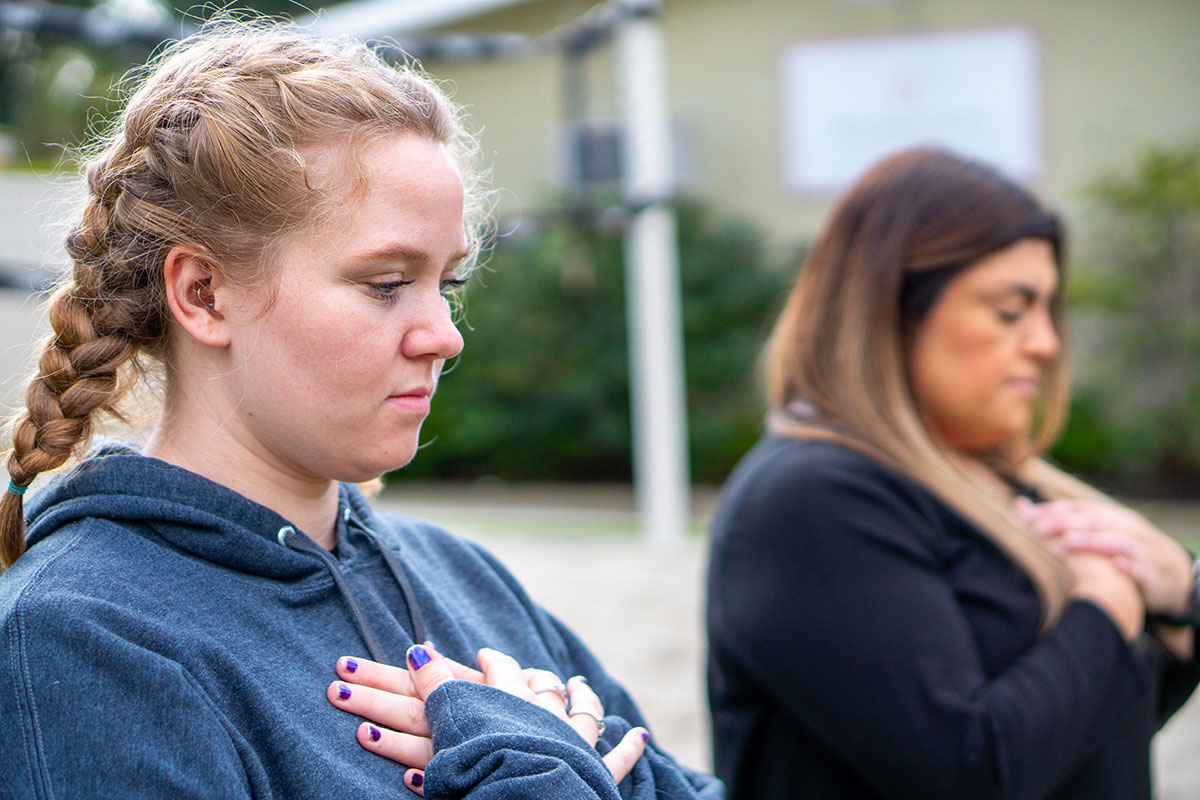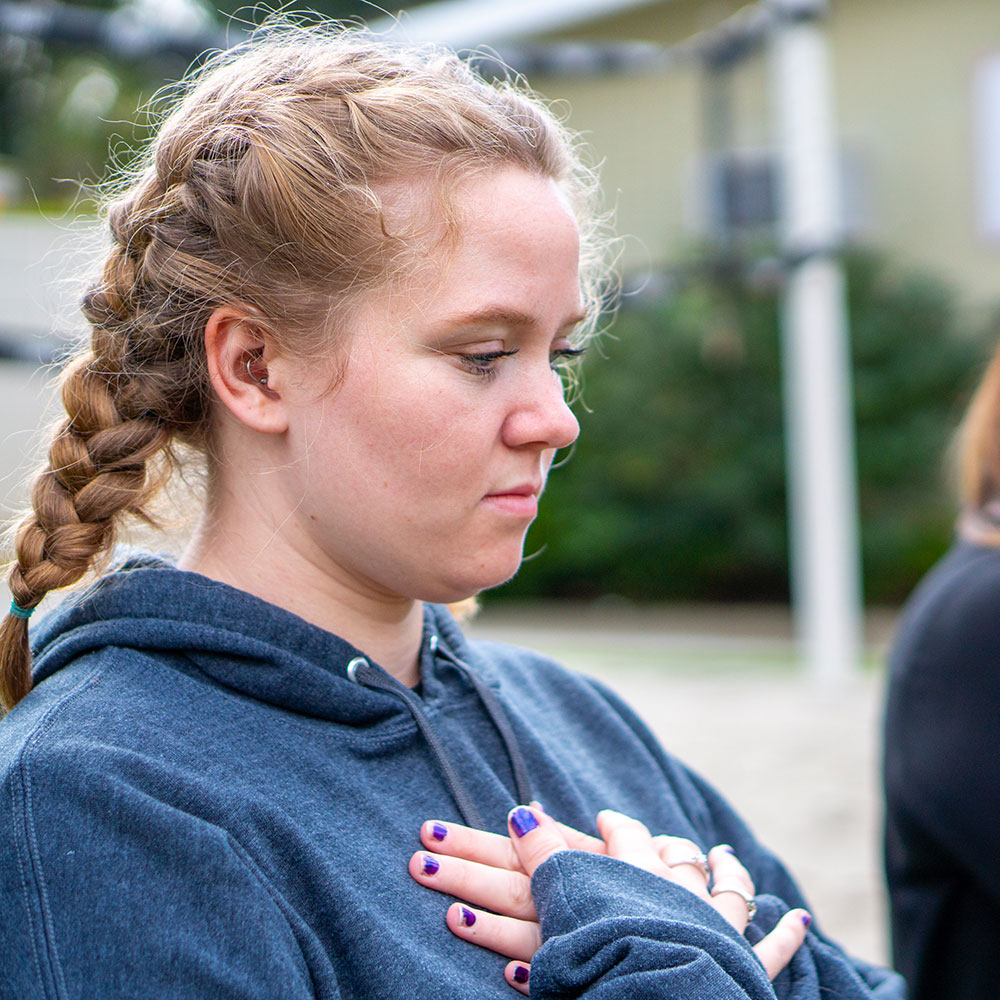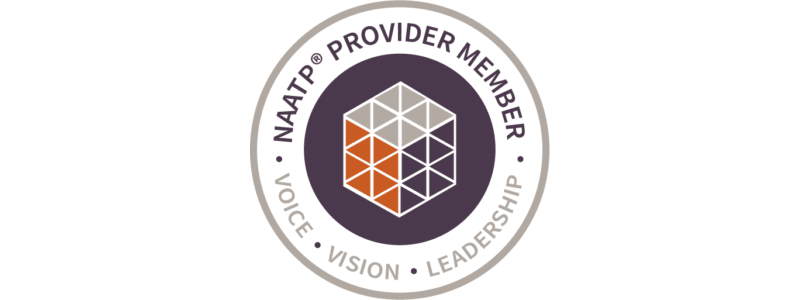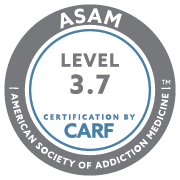Codependency and addiction, unfortunately, commonly co-occur. In many cases, people do not even notice the presence of codependent behaviors in their lives. But, when these behaviors are accompanied by substance abuse, the effects can be severe and difficult to address.
We all value our connections with other people, especially in our romantic relationships. The truth is, humans long for connection, and it allows us to build intimacy and bonding with our partner. The success of our relationships depends on the quality of our emotional connection with each other.
What are Codependency and Interdependence?
 One of the main elements of relationships is understanding the difference between interdependence and codependency.
One of the main elements of relationships is understanding the difference between interdependence and codependency.
In an interdependent relationship:
- Both partners recognize and value the importance of the emotional bond they share.
- They maintain a solid sense of themselves within the relationship process.
- An interdependent person sees the value of openness and can turn to their partner in meaningful ways to create closeness between them.
- They also value a sense of self. This allows them and their partner to be themselves without compromising who they are or their personal values.
In a codependent relationship:
- A codependent person tends to rely on others for their sense of who they are and well-being.
- A codependent person cannot tell the difference between where they end, and the other person begins.
- There is an entangled feeling of responsibility to another person to meet their needs and/or for their partner to meet all of their needs so they can feel okay about who they are.
Traits of a codependent relationship include:
- Manipulation
- Blaming each other
- Controlling behaviors
- Little to no boundaries
- People-pleasing behavior
- Problems with emotional intimacy
- Ineffective, unhealthy communication
- No personal interests or goals outside the relationship
- Low self-esteem and sense of self-worth in one or both partners
A codependent relationship is not healthy and does not allow each partner room to be themselves, to grow, and be independent. In some cases, a codependent relationship may involve one partner or both. They rely heavily on the relationship for their sense of self, feelings of being worthy, and emotional well-being. On the other hand, there are often feelings of guilt and shame for one or both partners if the relationship is not going well.
What Is the Root Cause of Codependency?
Codependency is most commonly rooted in childhood trauma. Therefore, codependency is more likely to develop in someone who felt neglected as a child, or whose emotions were punished or ignored. This behavior can cause a child to feel shameful and have low self-esteem. Many codependents felt as if their needs were not worth tending to when they were a child. This behavior may further develop and become apparent in future relationships.
Relationship Addiction
 Codependence was originally used to describe partners in chemical dependence or people in a relationship with an addicted person. Similarly, people who are in relationships with chronically ill or mentally ill people express these patterns. These days, however, the term has expanded to any codependent person from any dysfunctional family.
Codependence was originally used to describe partners in chemical dependence or people in a relationship with an addicted person. Similarly, people who are in relationships with chronically ill or mentally ill people express these patterns. These days, however, the term has expanded to any codependent person from any dysfunctional family.
Codependency is a learned behavior and a mental health issue. It’s an emotional and behavioral condition that affects a person’s ability to have a healthy, mutually beneficial relationship. Since people with codependency often form and keep relationships that are one-sided, emotionally damaging, and sometimes abusive, it is known as “relationship addiction.”
How Does Codependency Enable People Suffering From Addiction?
 Codependent partners don’t admit that a problem exists. They don’t talk about them or confront them. This results in family members who learn to repress their emotions and neglect their own needs. They become “survivors.”
Codependent partners don’t admit that a problem exists. They don’t talk about them or confront them. This results in family members who learn to repress their emotions and neglect their own needs. They become “survivors.”
As a result, they develop behavior that helps them deny, ignore, or avoid tough emotions. As a result, they don’t confront each other. They don’t feel. They don’t trust. They don’t talk. In the end, the emotional development of the codependent person or persons is often suppressed.
All of the attention and energy focus on the individual who is addicted. The codependent person usually sacrifices their needs to take care of a person who is sick, whether with a substance abuse disorder or mental illness. They have good intentions but taking care of a person suffering from substance abuse issues becomes compulsive and self-defeating.
Martyrs
Codependent people often play the part of a martyr and become “benefactors” for the person with the addiction. A spouse may cover their partner’s substance abuse habits, or a mother may make excuses for a child who is skipping school. Maybe the father is able to “pull some strings” to keep his child from facing the consequences of his behavior.
These repeated rescues allow the person struggling with an addiction to continue on a destructive course. Eventually, the codependent relationship suffers as the struggling partner becomes more dependent on their “benefactors,” and substance abuse intensifies.
Negative Effects of Codependency and Addiction
Likewise, as the reliance increases, the codependent benefactor develops a feeling of reward and satisfaction from being needed. But when the caretaking becomes compulsive, the codependent partner feels helpless and without any choice in the relationship. They’re not able to break out of the cycle of behavior that caused it. Codependents see themselves as victims and are attracted to that same weakness in their love and friendship relationships.
 Codependent individuals often exhibit:
Codependent individuals often exhibit:
- Low self-esteem
- Continuous anger
- Dishonest personality
- Need to control others
- Poor sense of communication
- Hard time making decisions
- Extreme need for approval
- Feeling of guilt when standing up for themselves
- Constant longing to do more than their share
- Tendency to feel hurt when people don’t notice their efforts
- Excessive feelings of responsibility for the actions of others
- Tendency to confuse love and pity (they tend to love people they can pity and rescue)
- Unhealthy dependence on relationships (they will do anything to hold onto a relationship)
- Lack of trust in themselves and others
- Fear of being abandoned or alone
- Difficulty determining their feelings
- Difficulty adjusting to change
- Problem with boundaries
Is Codependency a Sign of Addiction?
As noted above, codependent behavior is a relationship addiction or love addiction. The focus on other people to relieve our pain and feelings of emptiness while ignoring our own feelings only grows. The person expressing codependent behaviors may become obsessive, which can cause their behavior to become obsessive, even in the face of negative consequences. This is why codependency is an addiction.
What Are the Signs of a Codependent Relationship?
Codependency also features signs that vary through its continuation, similar to those associated with substance abuse. The symptoms range from mild to severe and include:
- Reactivity
- Caretaking
- Dependency
- Lack of self-image
- Poor communication
- Lack of healthy boundaries
- Constantly people pleasing
- Consistent stress from relationship
Like a person with chemical dependence, the codependent person increasingly spends time thinking about, being with, or trying to control another person. As a result, other social, recreational, or work activities suffer.
Finally, they might continue the behavior, and the relationship, despite the constant social problems it causes between people. Codependency is continuous and has lasting symptoms that get worse over time without intervention and treatment.
Is Codependency a Mental Illness?
Many believe codependency to be more of a psychological construct than a mental illness. It is not officially recognized as either a mental illness or personality disorder. However, it is important to note that some characteristics of codependency overlap with signs of personality disorders.
Codependency and Addiction: How Do You Draw Boundaries?
The first thing you need to do to change unhealthy behavior is to understand it. It’s important for codependents and each family member to become educated. They should learn about the course and cycle of addiction and how it spreads into their relationships. You can find educational materials at libraries, substance abuse treatment programs, and mental health centers.
How Do I Break My Codependency?
There will need to be a lot of change and growth for the codependent and his family members. Any caretaking behavior that enables the use of drugs or alcohol to continue needs to be identified and stopped. The codependent person must express and welcome their own feelings and needs. This will include learning to say “no.” You must be loving but tough and learn to be self-reliant and understand your self-worth.
The more you understand codependency and addiction, the better you can deal with their effects. Asking for information and assistance can help you live a healthier, more satisfying life.
Are Women More Likely to be Codependent?
 When people think of codependence, they might automatically think of women. Despite this stereotype, most studies find that there is little or no difference between genders. Some studies even find that men score higher on codependence measures than women.
When people think of codependence, they might automatically think of women. Despite this stereotype, most studies find that there is little or no difference between genders. Some studies even find that men score higher on codependence measures than women.
When you think about it, any person of any gender can be an empathetic person whose giving nature is taken advantage of by “takers”. Likewise, parents often set their children up for a codependent relationship by expressing abusive, neglectful, and absent behavior.
However, for women, unhealthy helping and giving can come from behaviors and traits that are culturally encouraged for women. Unfortunately, many people believe that women should put others first and be nice and considerate. Traditional roles direct women to take care of other people, make their lives easier, and care for those who are dependent.
Helping vs. Enabling
Of course, it’s not a bad thing to help others or rescue someone in trouble. These things that people do help make the world a better place. But sometimes, it’s a good idea to consider whether the gender script you’re following will cause you to enable someone.
Is it possible that it would drain your emotional, physical, or financial resources? Would it lead you into an off-balance relationship with someone who will use you to escape responsibility? The bottom line is, you need to consider whether your actions really benefit someone or do they enable them.
Treatment Options for Codependency and Addiction
 Symptoms of codependency are reversible when an individual enters treatment. Unfortunately, people don’t usually seek help until there’s a major problem or they’ve had enough pain to motivate them. Many times, they aren’t even aware of their codependency and may be in denial about someone else’s substance abuse.
Symptoms of codependency are reversible when an individual enters treatment. Unfortunately, people don’t usually seek help until there’s a major problem or they’ve had enough pain to motivate them. Many times, they aren’t even aware of their codependency and may be in denial about someone else’s substance abuse.
Since codependency and addiction are usually rooted in a person’s childhood, addiction treatment often involves exploration into early childhood issues and their relationship to current destructive behavior patterns. Addiction treatment includes education, experiential groups, and individual, group, and family therapy. During substance abuse treatment, co-dependents rediscover themselves and identify self-defeating behavior and patterns of low self-esteem.
Treatment also focuses on helping people coping with codependency to get in touch with feelings that have been buried during childhood and on rebuilding family relationships. The goal is to allow them to experience their full range of feelings again. Recovery comes from education and coming out of denial. Reading about the issue is a good start, but greater change comes through therapy and possibly a 12-step program.
Learn to Care for Yourself at New Directions for Women
 As you have read, codependency and addiction are challenging to deal with. You need to end your addiction to that behavior before you can help anyone else. Similar to an airplane, you need to put on your oxygen mask first. And at New Directions for Women, we know how to help you put on your oxygen mask first.
As you have read, codependency and addiction are challenging to deal with. You need to end your addiction to that behavior before you can help anyone else. Similar to an airplane, you need to put on your oxygen mask first. And at New Directions for Women, we know how to help you put on your oxygen mask first.
We are a treatment facility dedicated to helping women suffering many issues, such as codependency and addiction. We are accustomed to helping women in many different situations. And we are successful at helping to heal your family. Reach out to our team today. New Directions has many programs, and you will be able to find one that fits you or your loved one’s needs.










